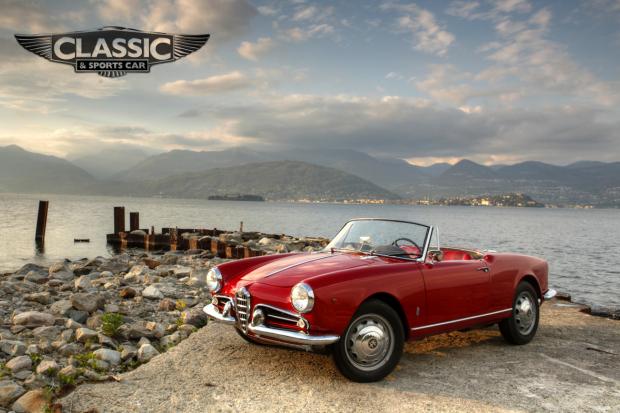
C&SC’s resident Alfisto Mick Walsh celebrates Italian style with a blat around the lakes in a Giulietta.
Dreaming up the perfect road trip to celebrate Alfa Romeo’s centenary has been an entertaining distraction. With no restrictions on car or route, should it be Vittorio Jano’s magnificent 8C Monza over the epic Mille Miglia passes in Tuscany, a hot lap of Monza in a GTA, or maybe a Tipo 33 prototype around the sinuous, sun-baked Targa Florio course? But more significant than these glorious competition machines is Project 750, better known as the Giulietta, which, thanks to the inspired direction of engineers Orazio Satta Puliga and Rudolf Hruska, brought Alfa Romeo into the modern mass-production market in ’54. Its free-revving, all-aluminium 1290cc twin-cam ‘four’ powered a remarkable range of models, from family saloons to flyweight GT racers. Purity of styling, rewarding controls and lively performance made this affordable ’50s jewel a great driver’s car that, more than any other model before or since, established the marque’s reputation and character. Production of all types totalled 12,000-plus in its first two years, making it immediately far more important than the exotic pre-war greats.

The options look unlimited for an appropriate Giulietta jaunt, but a spring drive around the Italian lakes, diverting over some historic rally passes, seems spot-on for the anniversary. Combining that scenic escape with visits to the factory museum at Arese – plus the glamorous Villa d’Este concours – promises the ideal Alfa excursion. Luckily Walter Laimer, a passionate German Alfa enthusiast who runs an impressive fleet of Giuliettas and Giulia Spiders for corporate and private tours, has similar ideas about a centenary run around Lake Maggiore.

A Sprint GT would have been highly appropriate because the Bertone-styled beauty was the first Giulietta model launched at the 1954 Turin show as the cute Berlina’s lengthy gestation stretched into ’55. But, as desirable as the coupé undoubtedly is, the Spider is our preferred choice for this romantic trip. Laimer’s brilliant organisation doesn’t stretch to a beautiful Latin companion for the full Dolce Vita experience, so the Giulietta’s eager 103mph performance is handicapped by the addition of photographer Baker. In original single-Solex 65bhp tune, the 1290cc motor has to work extra hard with two blokes, plus their cameras and luggage.








